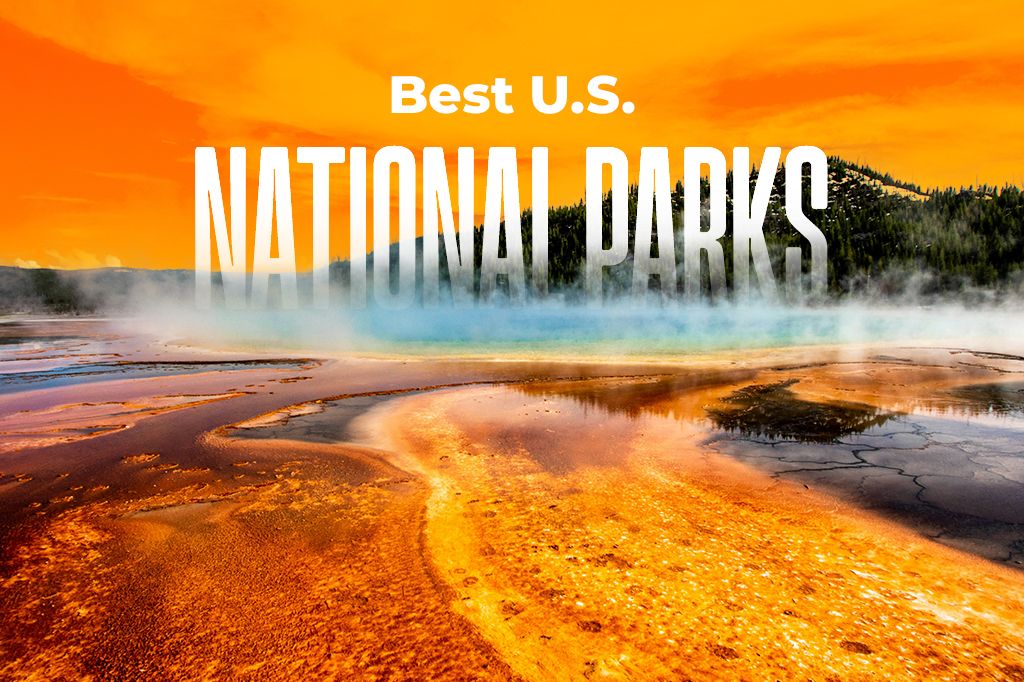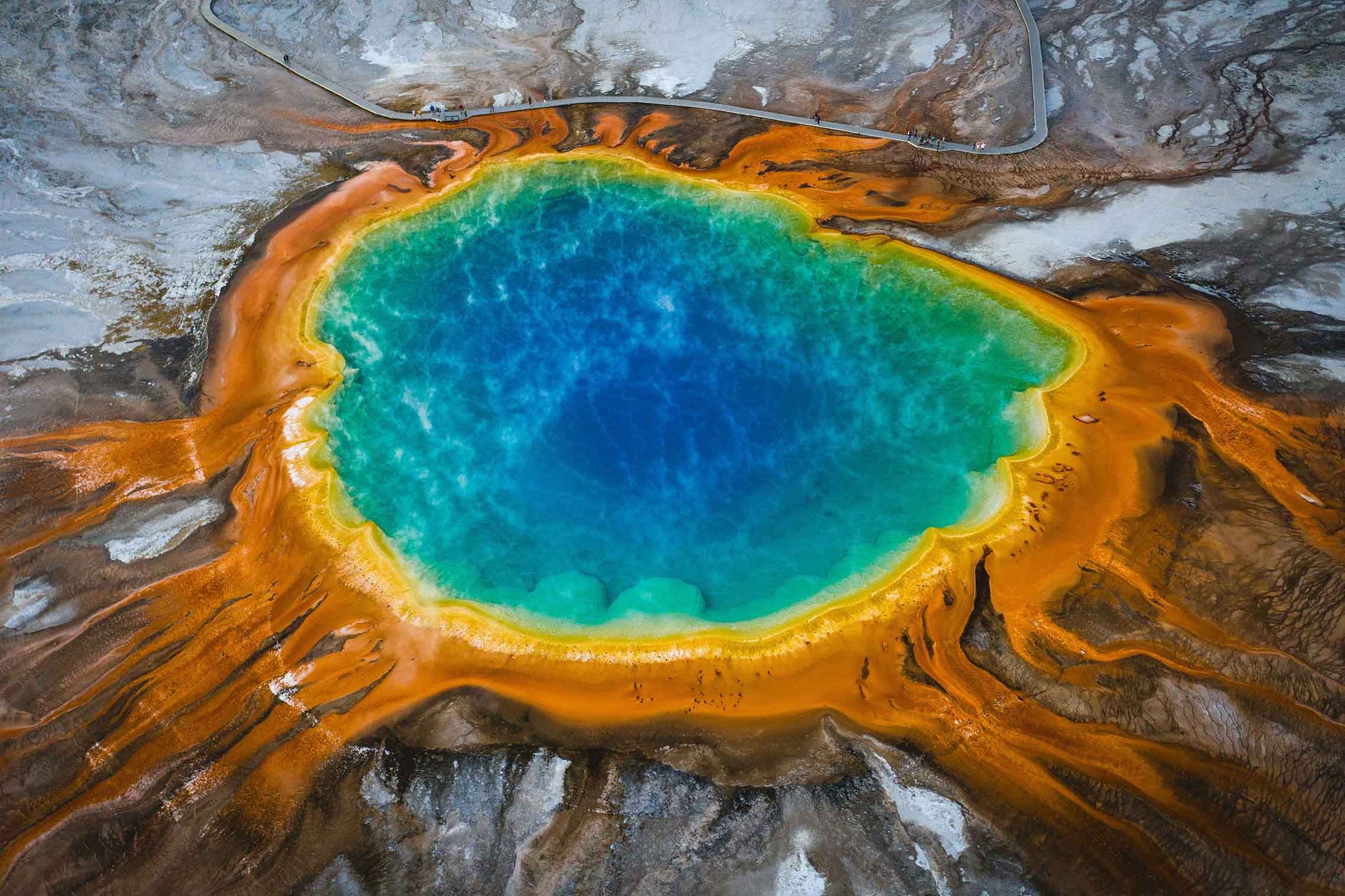Discover the Wild Side: Best U.S. National Parks to Visit in 2025
Marcos•Jul 17, 2025
The US has many incredible places to visit, but a great way to get to know more about the wonders of the country is by visiting its national parks. While they might seem alike at first, each park is different and has its own unique features. In this article, we’ll look at what makes each one special.

Picture by Nicolasintravel on Unsplash
No matter what park you choose to visit in the United States, you can stay connected with Yoho Mobile. Make sure you have a fast and reliable internet connection to share all those incredible photos with your friends and family. Try Yoho Mobile’s free eSIM if you haven’t yet, or use the promo code YOHO12 if you already did! It will give you a 12% discount on your purchase.
Let’s explore together some of the best national parks in the U.S. Keep reading if you don’t want to miss them!
Best National Parks to Visit in the U.S. in 2025
Yellowstone National Park
Let’s start with a certified classic, Yellowstone National Park. This park is quite famous for various reasons. It was the first national park in the world. It was founded all the way back in 1872. Or did you know about it from the cartoons? Yellowstone is also one of the largest national parks, with an area of approximately 8,983 km², which makes it a key point for conservation. If you’re looking forward to visiting it, you’re not the only one. It is such a popular tourist destination that it receives about 4 million visitors annually.
Interesting details about Yellowstone National Park:
-
There is a supervolcano, which has had significant eruptions in prehistoric times. But don’t worry, it’s surveilled constantly, and the last one occurred approximately 70,000 years ago.
-
Yellowstone Lake is one of the largest and deepest lakes in North America, with a depth of up to 121.9 meters. You can swim there, but it’s really cold, so be prepared.
-
It is estimated that more than 300 species of birds and multiple species of mammals inhabit this area. So keep an eye out!

Picture by Denys Nevozhai on Unsplash
Sequoia National Park
Yellowstone had quite a lot of interesting things, but it sure didn’t have the most significant trees in all of North America. That honor belongs to the third national park created in the United States. The Sequoia National Park is located south of the Sierra Nevada in California, and it has an area of approximately 1,635 km². It has many famous giant sequoias, like General Sherman Tree, which is not the tallest, but is the largest tree by volume in the world.
Interesting details about Sequoia National Park:
-
You’ll find the highest peak in the United States, outside of Alaska. Mount Whitney, at 4,418 meters, is the highest peak in the contiguous United States and can be hiked during the summer. It’s not a technical hike, but it is really long and tiring.
-
The most visited places in the park are Giant Forest, Moro Rock, Tunnel Log, and Congress Trail. You can explore them on your own or take a guided tour.

Photo by Thomas Wavid Johns on Unsplash
Yosemite National Park
Keeping up with the older National Parks, we arrive at Yosemite National Park, founded in 1890. It’s located in California’s Sierra Nevada, and it is one of the most emblematic and visited, so many people consider it one of the best national parks in the United States. In its 3,081 km², you can find changing landscapes, from granite cliffs, majestic waterfalls, to giant sequoia forests.
Important details you should know about Yosemite National Park:
-
In the park, you’ll find Yosemite Falls, the highest waterfall in North America at 739 meters. It’s a very impressive sight, so make sure you have your camera ready.
-
Even if the biggest sequoias are in the Sequoia National Park, here, in the Mariposa Grove forest, you’ll find the oldest. This includes the famous Grizzly Giant, which is about 3,000 years old.
-
It’s a key site for the conservation of rare and endangered species, as approximately 95% of the area is designated as wilderness.

Photo by Adam Kool on Unsplash
Grand Canyon National Park
Probably the most well-known national park in the whole US is Grand Canyon National Park in Northern Arizona. It is home to one of the most impressive natural wonders in the United States and the world, and you surely have seen thousands of photos and references to it. This park of approximately 4926 km² reveals almost 2,000 million years of geological history in the walls of the canyons. It’s amazing how the Colorado River eroded it slowly, creating an intricate and colorful landscape that attracts millions of visitors each year.
Interesting features of the Grand Canyon National Park:
-
The park treasures great biodiversity and is home to numerous endangered species that have found refuge in this area, such as the California condor.
-
It has been inhabited by various Native American tribes for thousands of years, who consider it a sacred region. And you can still visit their villages and see traces of their history all around the area.

Photo by Susanne Martinus on Unsplash
Rocky Mountain National Park
If you enjoy mountains and long hikes, you’ll love this park, one of the best national parks in the United States. The Rocky Mountain National Park was established in 1915 in the state of Colorado. It has two very distinct ecosystems: the eastern drier and mountainous, and the western wetter and forested. So you have plenty of activities to choose from there.
Other important details about the Rocky Mountain National Park:
-
It is a big park, with an area of approximately 1,076 km², but the most impressive fact is that it has more than 150 lakes and 60 peaks. The highest of them is Longs Peak with 4,346 meters.
-
If you travel there, expect changing temperatures. For example, even in the hottest month, while day temperatures can exceed 27 °C, nights can be cold, even below 0°C.
-
If you’re interested in plants and animals, the lower areas are covered by pine and Douglas-fir forests, while species such as Engelmann spruce predominate at higher altitudes. Wildlife includes moose, Canadian deer, black bear, and bighorn sheep, which are usually timid.

Photo by Michael Kirsh on Unsplash
Glacier National Park
If you want a different kind of park, with a more unique landscape, Northwest Montana is home to one of the best parks in the United States. Glacier National Park is a stunning natural destination that covers approximately 4,102 km² and is part of the famous Rocky Mountain range. Although a century ago the park had 150 glaciers, there was a significant decrease, so currently it has only 25 active glaciers.
Interesting facts you should know about Glacier National Park:
-
Look at the mountains. Do you see the pyramidal peaks and deep valleys? They have been shaped by the action of glaciers.
-
Glacier National Park has more than 130 lakes, with the largest being Lake McDonald. It’s also one of the highest lakes in the United States, located at 960 meters above sea level.
-
It has more than 1,000 species of plants and several wild animals, including grizzly bears, bison, cougars, and wolves. So be careful and don’t leave any trash behind you.
-
It is open year-round; however, many facilities close in the winter due to weather conditions. The main entrance is located on West Glacier. So the best time to visit Glacier is between late June and September, when most facilities are open and weather conditions are ideal for outdoor activities.

Photo by Michael Kirsh on Unsplash
Great Smoky Mountains National Park
Want to know what would be considered the best national park in the United States if you judged solely on volume of visits? Then that would be the Great Smoky Mountains National Park, which receives about 10 million visitors annually. This park is also a protected area that extends along the border between Tennessee and North Carolina. With around 760 km² of exuberant mountains and forests, it’s an ideal place for visitors to experience the rich cultural history of the Appalachian Mountains.
Here are some other details:
-
It is home to an impressive biodiversity, with more than 17,000 species of plants and animals. The region is known for its high concentration of salamanders, considered the largest variety in the world.
-
The highest point is Clingmans Dome, which reaches an altitude of 2,025 meters, and it’s a steep hike, but not an overly difficult one.
-
The park offers almost 1,300 kilometers of hiking trails and spectacular waterfalls such as Laurel Falls and Hen Wallow Falls. So be prepared to spend a couple of days there.
-
And remember, if you spend the night in the Appalachian Mountains, and you hear something. No, you didn’t.

Photo by Rodney Truitt Jr on Unsplash
Everglades National Park
We arrive at the final park on our list, but we assure you that there are plenty more great national parks in the US. The Everglades National Park, on the southern tip of Florida, is the largest subtropical natural park in the United States. It covers an area of approximately 6104 km². It is a unique ecosystem declared a World Heritage Site, Biosphere Reserve, and Wetland of International Importance.
Here are some other important details about the Everglades National Park:
-
The park includes wetlands, mangrove forests, freshwater prairies, and endangered animal species such as the Florida panther, West Indian manatee, and Florida black bear.
-
It has more than 36 hiking trails, canoe and kayak excursions, guided boat rides, and even hovercraft tours, so you have plenty of activities to enjoy there.
-
The dry season, from December to April, is the best time to visit the park because temperatures are milder and there are fewer mosquitoes. Even then, bring insect repellent and a hat to protect yourself from the sun.

Photo by Brice Cooper on Unsplash
